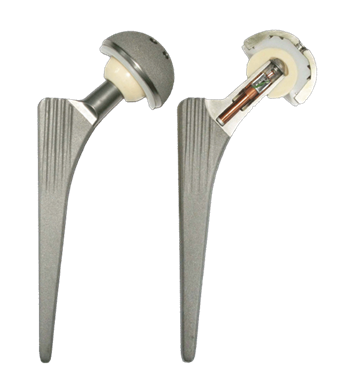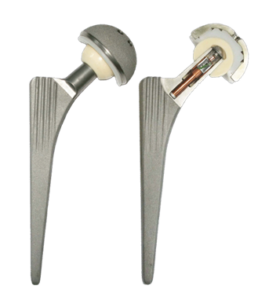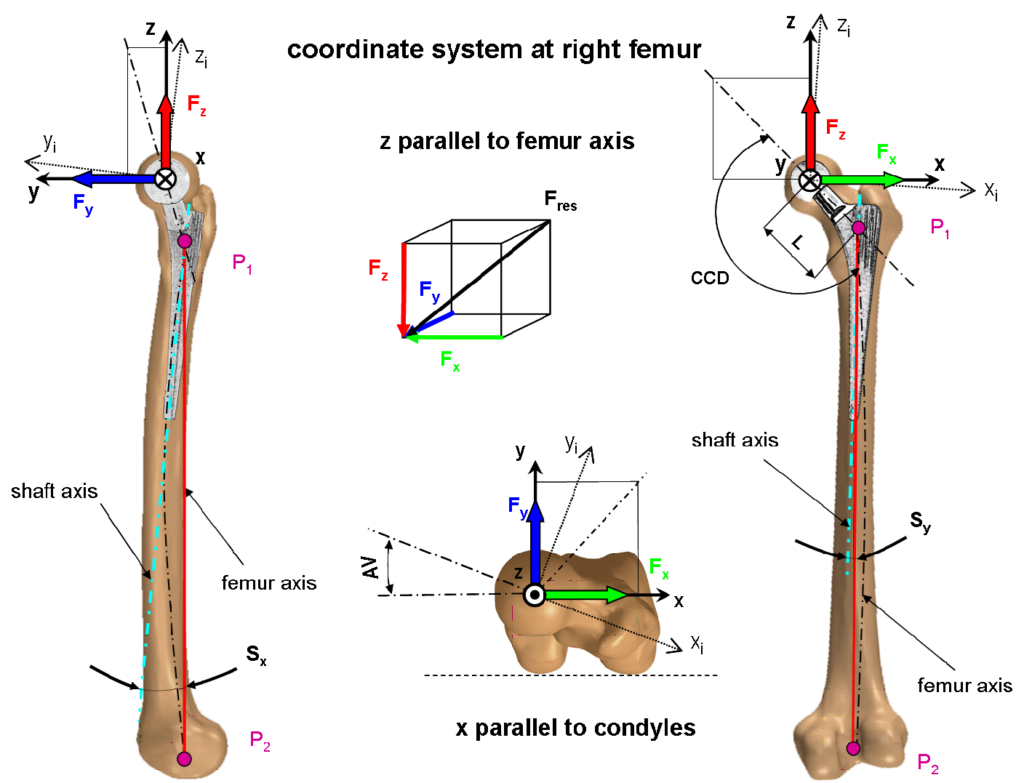Hip Joint III
The actual hip implant (Hip III) monitor the three force components and the three moment components acting on the ceramic head of the hip joint.
Instrumented implant
Hip III with one 9-channel transmitter
This new design of a instrumented hip implant was developed to measure contact forces and the friction at the joint in vivo. A clinical proven hip implant (‘Spotorno’ design) was modified in the neck area. The stem is build by TiAl6V4 and Al2O3- Ceramic was choosen for the implant head material. The neck was widened and enhanced with a 6.2 and 10mm hole. In the hollow neck are housed six semiconductor strain gauges, an internal induction coil and the telemetry. The six strain gauges are applied at the lower part on the inner wall (10mm hole) and connected to the 9-channel transmitter. The antenna, placed under the implant head, is connected by electronically feed-through to the internal telemetry. The feed-through is welded by a laser beam into the top plate. The hollowed neck is closed by the top plate and welded with an electron beam. Therefore the internal space is hermetically closed against the body fluids.
With this implant three contact forces acting onto the implant head center and three friction moments acting between the gliding partners can be measured in vivo.
Since April 2010 ten instrumented hip joints (Hip III) were implanted in ten patients (H1L, H2R, H3L, H4L, H5L, H6R, H7R, H8L, H9L and H10R) to monitor forces and moments. No further implantations are planned.
Coordinate system
Fermur system
All forces are reported in a right-handed coordinate system of the right femur (different from hip joint type I and II). The load components are reported as Fx, Fy, Fz. The femur system is fixed at the centre of the femoral head. The femoral midline (dotted black) intersects the axis of the neck in point P1. Point P2 is defined as the deepest point of the fossa intercondylaris at the distal end of the femur. The straight connection between P1 and P2 defines the z axis of the femur. The z axis of the coordinate system is parallel to the z axis of the femur.
The x axis of the coordinate system is defined perpendicular to z and parallel to a plane through the most dorsal parts of the condyles and points laterally. The y axis of the coordinate system is perpendicular to x and z and points ventrally.
Implant system
In order to test fatigue or strength of the implant itself, it may sometimes be required to know the force components in an implant-based coordinate system. Axis zi of this system coincides with the shaft axis of the implant. The xi axis lies in the neck-shaft-plane. For the transformation of forces from the femur- to the implant system, three angles are required: angle Sx between the z axis of the bone and the shaft axis of the implant, angle Sy between the z axis of the bone and the shaft axis of the implant and furthermore the anteversion angle AV of the implant. These data are provided by the table in the video (“Info Patient”).
- Turning the system by +Sx around the – x axis
- Turning the system by +Sy around the – y axis
- Turning the system by -Av around the + z axis
More details about this transformation are given here and in Bergmann et al. (2001) (http://www.ncbi.nlm.nih.gov/pubmed/11410170?dopt=Abstract).
Patients
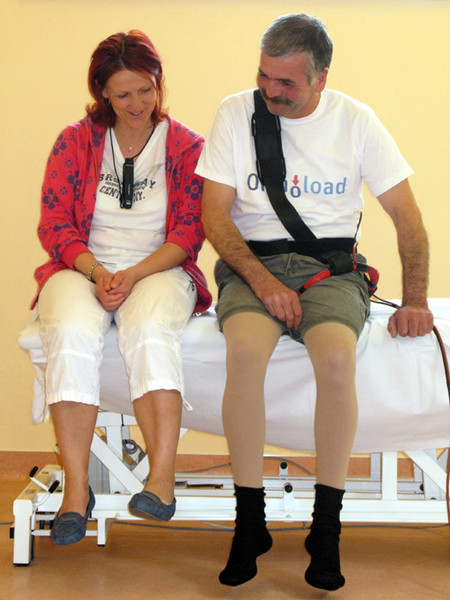 | 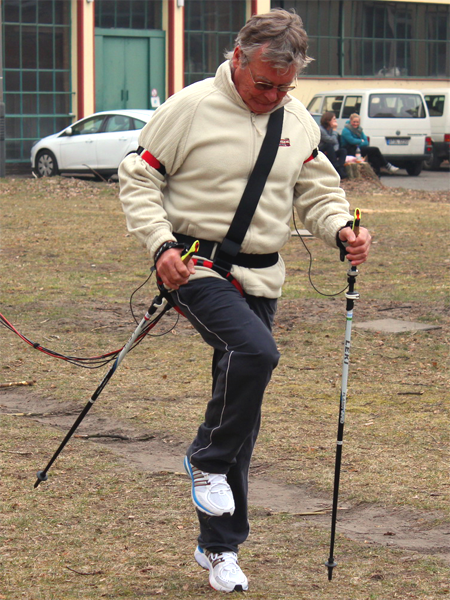 | 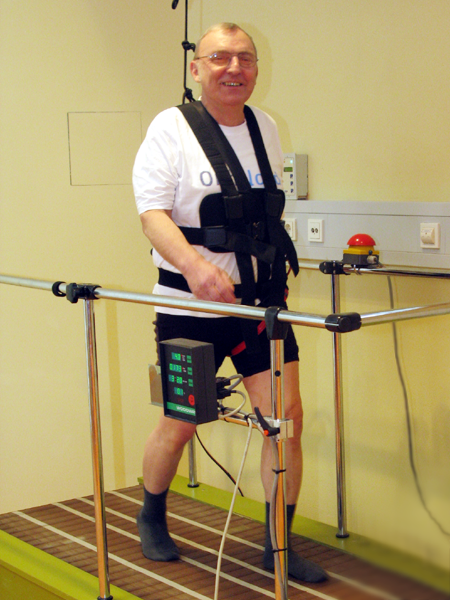 | 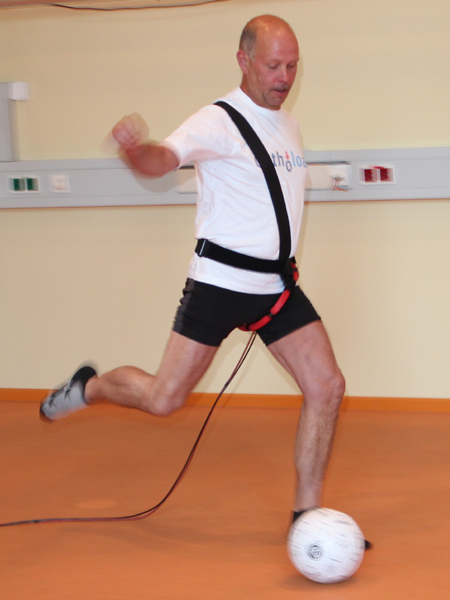 | 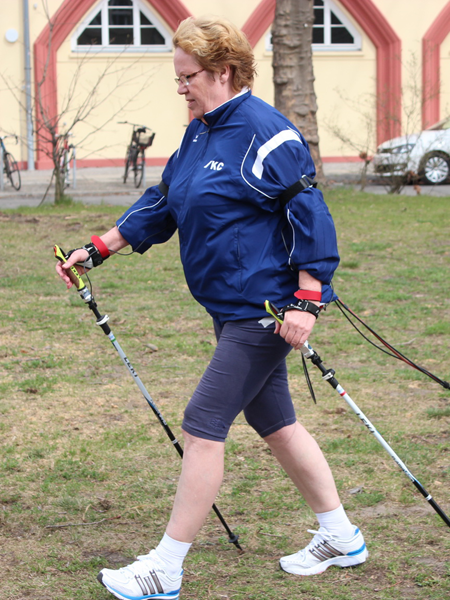 |
| H1L | H2R | H3L | H4L | H5L |
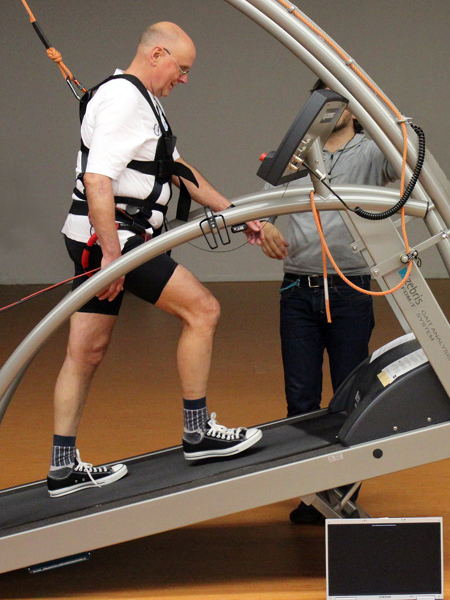 | 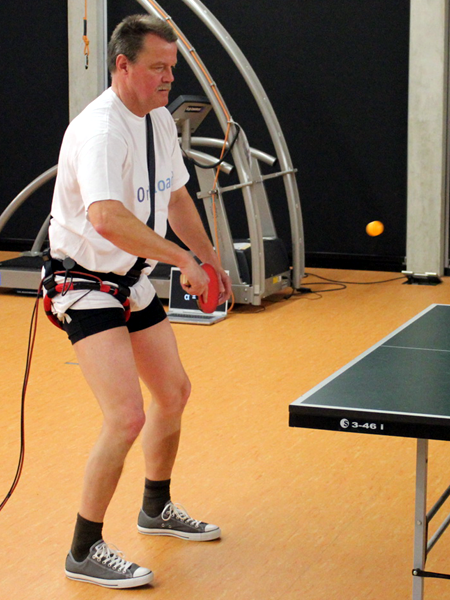 | 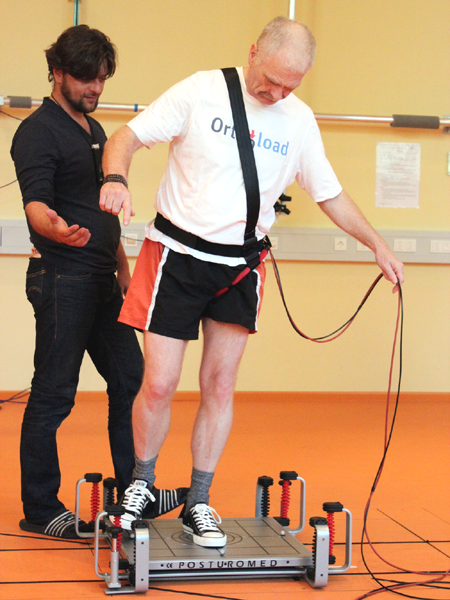 | 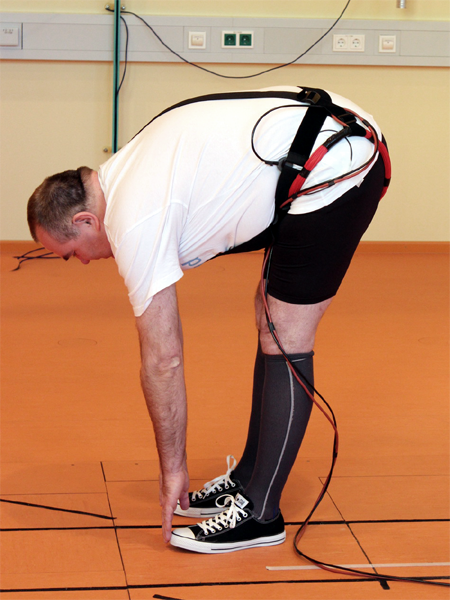 | 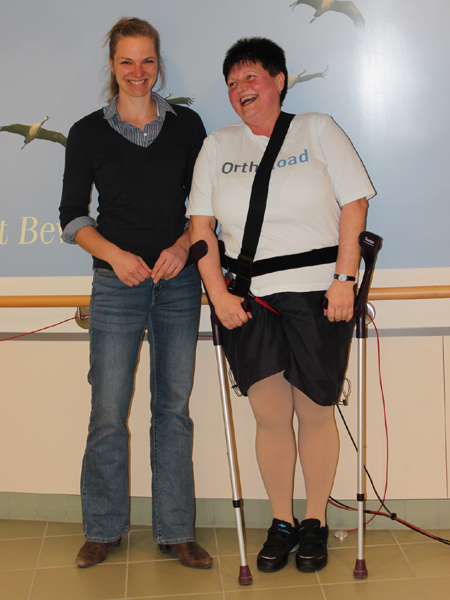 |
| H6R | H7R | H8L | H9L | H10R |
Table with basic information about the patients with Hip III implants:
| Patient | Side | Gender | Weight [kg] | Height [cm] | Age at Implantation [years] | Indication |
| H1L | left | m | 73 | 178 | 55 | Coxarthrosis |
| H2R | right | m | 75 | 172 | 61 | Coxarthrosis |
| H3L | left | m | 92 | 168 | 59 | Coxarthrosis |
| H4L | left | m | 85 | 178 | 50 | Coxarthrosis |
| H5L | left | f | 87 | 168 | 62 | Coxarthrosis |
| H6R | right | m | 84 | 176 | 68 | Coxarthrosis |
| H7R | right | m | 95 | 179 | 52 | Coxarthrosis |
| H8L | left | m | 80 | 178 | 55 | Coxarthrosis |
| H9L | left | m | 118 | 181 | 54 | Coxarthrosis |
| H10R | right | f | 98 | 162 | 53 | Coxarthrosis |
For the hip joint III, the forces and moments in an implant-based coordinate system are of especial interest. The torque around the shaft axis, for example, is one of the most important parameters for the stability of implant fixation. To transform the forces measured relative to the bone, as delivered by OrthoLoad, to the loads acting in the implant system, the anteversion angle AV of the implant, the CCD angle and the neck length L are required. This data is listed in the following table:
| Patient | Anteversion Angle AV [degree] | CCD Angle [degree] | Neck Length L [mm] | Shaft Angle Sx [degree] | Shaft Angle Sy [degree] |
| H1L | -15.0 | 135 | 55.6 | 2.3 | -2.3 |
| H2R | -13.8 | 135 | 59.3 | 4.1 | 0.6 |
| H3L | -13.8 | 135 | 55.6 | 4.0 | -3.0 |
| H4L | -18.9 | 135 | 63.3 | 7.5 | -1.7 |
| H5L | -2.3 | 135 | 55.6 | 4.0 | -2.3 |
| H6R | -31.0 | 135 | 55.6 | 5.8 | -1.7 |
| H7R | -2.4 | 135 | 63.3 | 6.3 | -1.7 |
| H8L | -15.5 | 135 | 59.3 | 4.6 | -1.7 |
| H9L | -2.3 | 135 | 59.3 | 4.6 | 0.6 |
| H10R | -9.7 | 135 | 59.6 | 1.7 | -1.2 |


